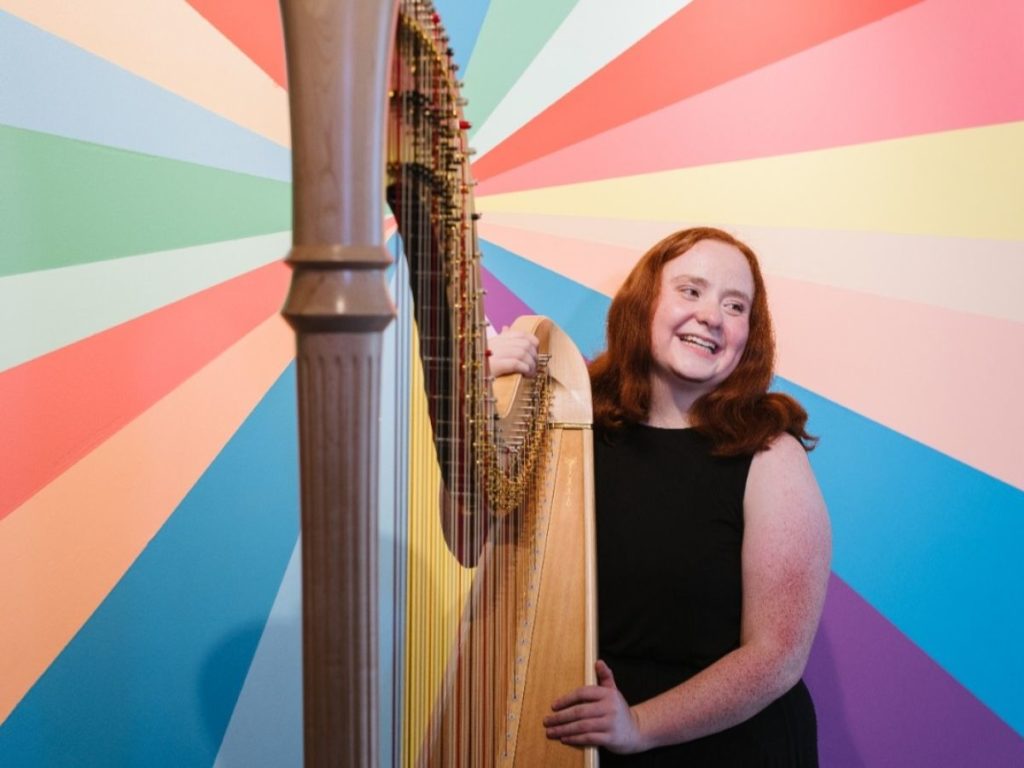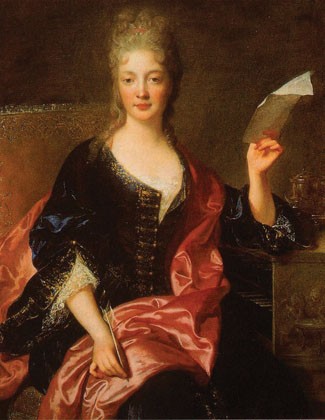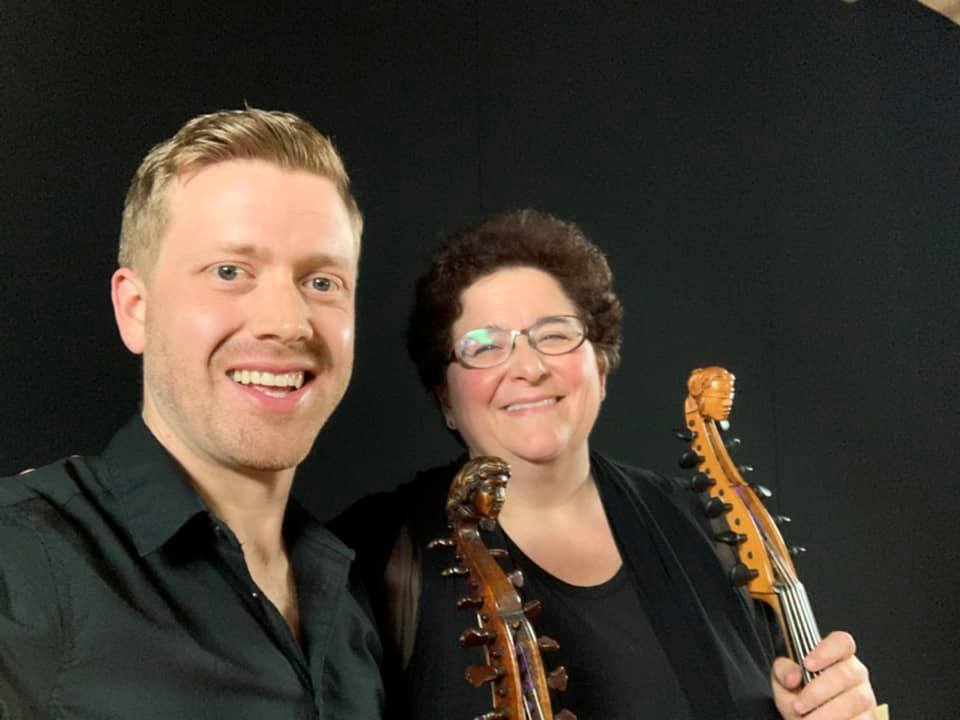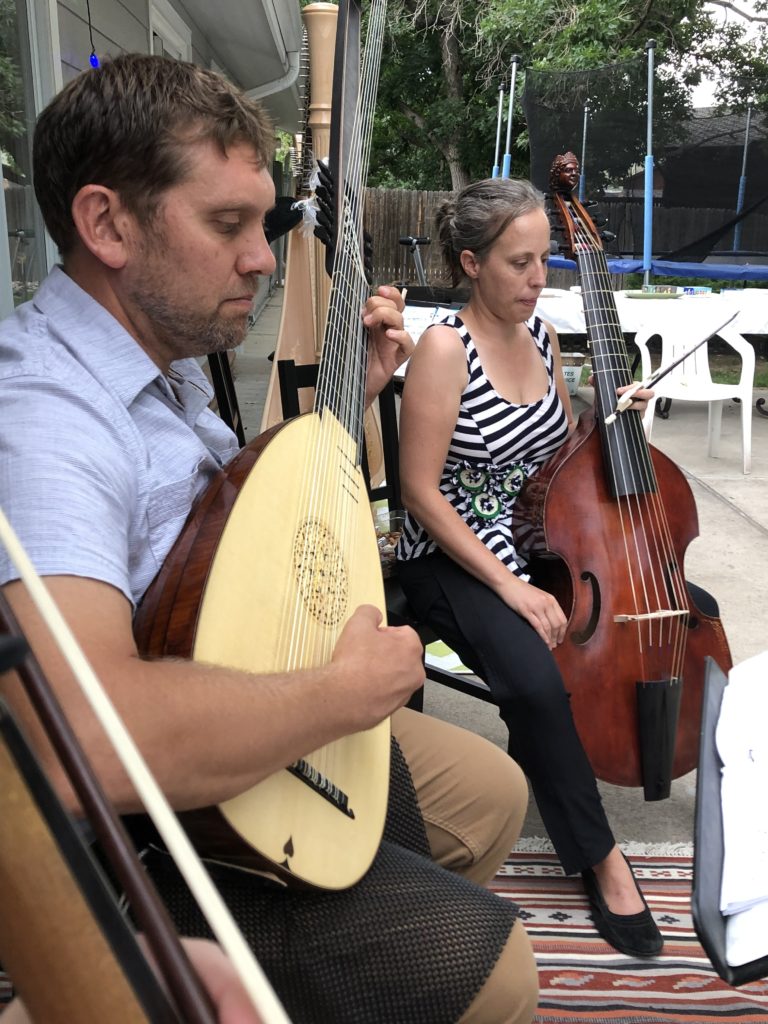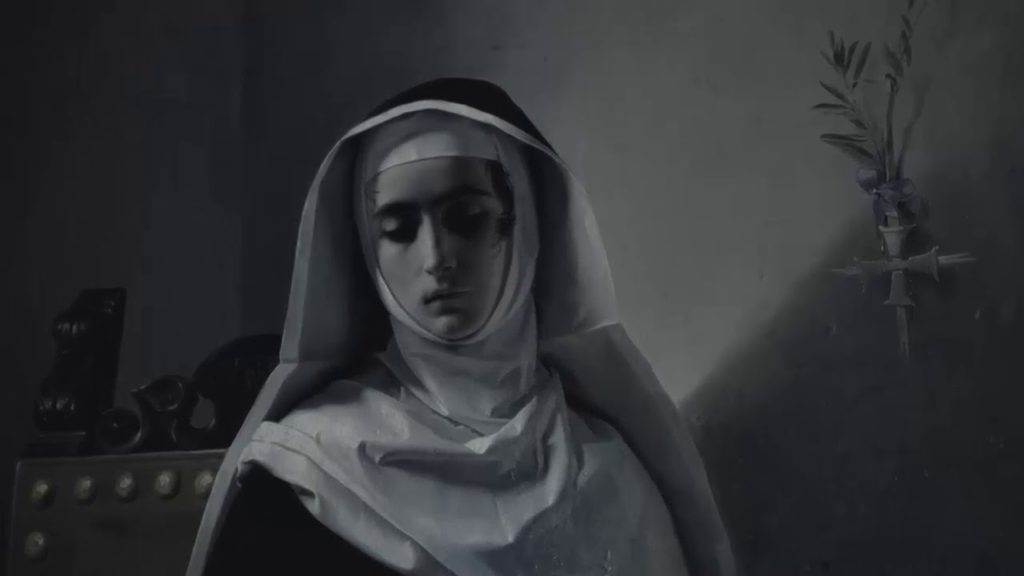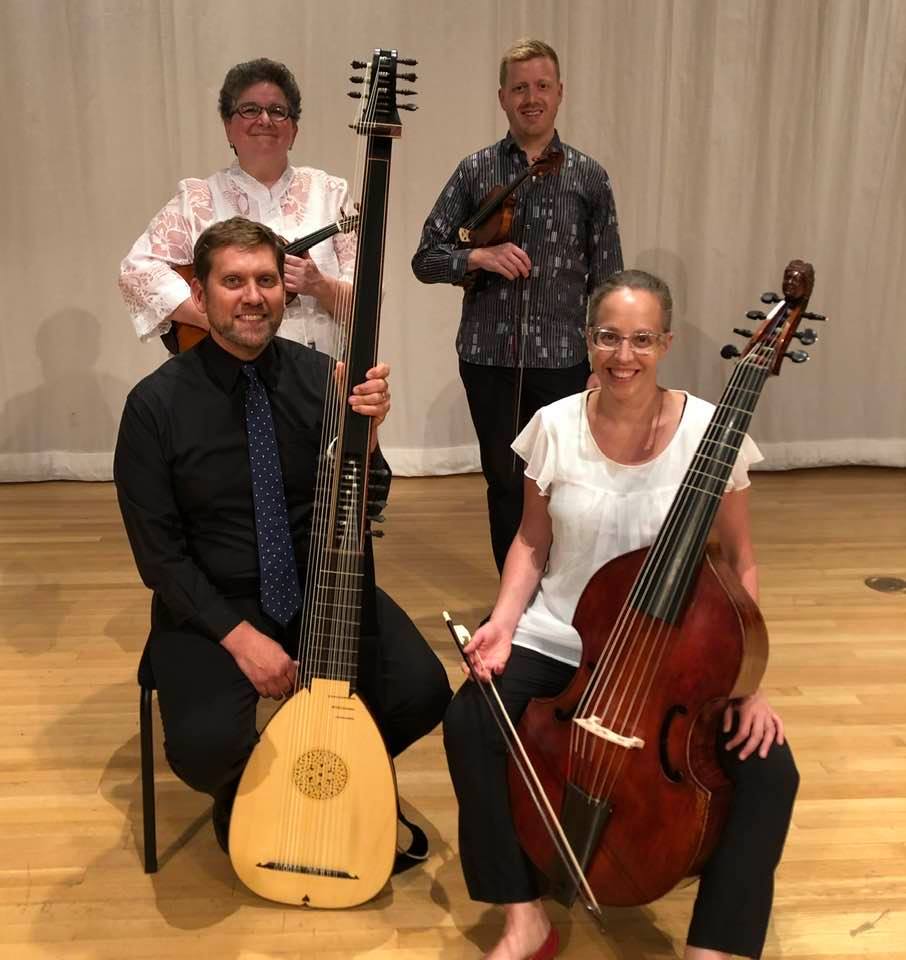Music for Midsummer: A Golden Evening for Baroque Music
Review by Elyn Joy
Few would deny the strangeness of this past year. Through it, we’ve come to know well the feeling of isolation. We’ve learned how to reconcile the hidden, sequestered parts of ourselves with the human need for expression and connection—even if through the grate of Zoom-land.
Likewise, some of the most gifted musicians of the Baroque era found themselves quarantined from the spotlit musical world (for other reasons, but still). Yet at the Colorado Chamber Players’ mid-July concert, Music for Midsummer, the gates were opened wide for a few of these lesser-heard voices. As the sun set against a painted foothills sunset in Golden, Colorado, they rose once again in a glorious moment of shared emancipation right at the intersection of two eras.
The composers chosen for the program included the son of a slave-mistress as well as three female composers—scarce in the Baroque era, when women faced abysmal odds at becoming successful in music, let alone in the other arts. In fact, much of the music penned by such “alternative” artists was lost, destroyed, or buried beneath centuries of regaled white male contemporaries. These works span the gamut of human emotion, which is unsurprising, given the societally-oppressive hurdles faced by each composer. As longstanding Artistic Director and Violist/Violist d’amore Barbara Hamilton remarked, “To find female composers from the Baroque era, to learn their stories and play their music was much like opening a treasure box. We learned so much from each one, and the experience was wholly gratifying.”
The evening began with a jovial (and safety-conscious)wine-and-cheese reception accompanied by the Tempo di Minuetto, the 2nd movement of the Sonata for Harp and Violin by Joseph Bologne, Chevalier de Saint-Georges (1665-1725). Bologne was the first recorded classical composer of African ancestry, able to forge his way to the world of music through his father’s social position, despite his mother’s slave parentage. Marie Antoinette took a fondness to his music; some conjecture that this very sonata was likely heard, if not inspired, by her.
The graceful, uplifting sonata was performed by rising-star harpist Lily Primus and her father, distinguished violinist Paul Primus. Lily, a sophomore at Rice University Shepherd School of Music, boasts a dizzying resume of accolades and professional experience for such a young musician. She felt drawn to Bologne’s work in particular, given the current social climate and the fact that most well-known classical composers were white and male. “I hope to explore more music by BIPOCand female musicians,” Lily shared. “To play the music of Bologne in particular on a modern instrument, is a challenge I enjoy. For one thing, it requires a much softer touch.” That touch, along with Paul’s gorgeously fluid performance, felt much like the unfurling of a silk curtain, or the lifting of a gate long kept closed.
Next came the Andante and Rondeau movements of the same sonata. A sparkling, warm harp melody floated upwards as if in questioning, only to be answered by the violin’s echoing answer. And so did the two instruments converse, at times converging in thoughtful unison. For Paul, Principal Second Violinist with the Colorado Symphony, the Bologne sonata brought a “wonderful elegance” to the event. “These lesser-known composers deserve to be recognized and heard,” he said.
Elisabeth-Claude Jacquet de La Guerre’s G minor trio Sonata #4, arranged for Two Violas D’amore, Gamba, and Archlute ushered in the rest of the evening’s ensemble. Jacquet de la Guerre (1665-1729) was a child prodigy, singing and performing on the harpsichord at the court of Louis XIV (the “Sun King”) by age five, and later becoming the first French woman to compose a sonata and an opera (along with many other works). Yet she also suffered great losses, among these the deaths of several family members. It was the poignancy of these losses that carried through the sonata. The music rang of nostalgia, beautiful yet jarring with moments of dissonance…yet through it all, a hopeful, upbeat refrain.
The dual Violas d’amore, instruments noted for their dual sets of strings (one for playing, one for reverberating) must have summoned the flock of starlings that passed across the gold-tinged sky. One of these D’Amores was inhabited—for “played” falls short—by Barbara Hamilton, whose vast experience has included the Orquesta Ciudad de Barcelona, the New York Philharmonic, and myriad other national and international performances and honors, as well as the DMA she earned from Yale University.
The other viola d’amore resonated through the mastery of visiting artist Dan Urbanowicz. Also a violist with the Sarasota Orchestra and regular with both the Jacksonville and the Southwest Florida Symphonies, he has played with the New World Symphony at Carnegie Hall, the Pacific Music Festival in Japan, and the Schleswig-Holstein Musik Festival in Germany, among many others. For him, playing Jacquet de la Guerre was sublime. “It goes beyond the mere fact that she was a woman,” Urbanowicz explained. “Jacquet de la Guerre’s work shows profound talent and a musical sense far ahead of her time.”
Sarah Biber played the bass viola da gamba with a deep, evident connection to the instrument. (Interestingly, the gamba evolved from the guitar, even as it is held and played much like a cello.) Biber has played across the U.S., Australia, and China, her love for the viola da gamba inspiring. “I find the gamba gorgeously extravagant in every way,” she said. The gamba was woven deep into this work’s emotional fabric, trading melody and harmony with the Violas d’amore with an almost painful ripeness at times. Biber’s virtuosity during a fast-paced section of running 16th notes was superbly executed.
And then, arising from inside the melody came the low, foundational rhythms of the archlute, a longer and more sonorous version of the traditional lute. Peter Schimpf drew out its richness with great precision and a sense of fun. Schimpf, chair of the music department and professor at Metropolitan State University of Denver, also plays the theorbo and classical guitar and has authored many papers on topics in musicology. “Playing Jacquet de la Guerre’s sonata was thrilling in its incredible energy and nonstop momentum,” he reflected. “In it the archlute felt like the ‘glue’ playing in the middle of all the other instruments, as if to hold the piece together,” which is just what his part seemed to do.
As the sun sank behind the foothills, the colorful garden lights sparkled to the sounds of Sonata Duodecima by Isabella Leonarda (1620-1704), arranged for viola d’amore (Urbanowicz), gamba (Biber), and archlute (Schimpf). Confined in an Ursuline convent from the age of 16, Leonarda was one of the most remarkably prolific woman composers of her time, with over 200 published works of music-and the first female-composed sonatas for violin and basso continuo.
The piece began with a faraway flavor, slightly middle-eastern in feel yet simultaneously reminiscent of a bustling Italian village. To brilliant soloist Urbanowicz, who captured the flavor with impassioned skill, the adagio “felt like a prayer—an incredibly freeing moment”… and then came the Allegro e presto, about which he joked, “… a sincere moment followed by a party. Maybe Leonarda was wearing a red dress under her habit!”
Based on the tempestuous dynamics and heady flourishes accomplished by both Biber and Schimpf as well, I wouldn’t be surprised.
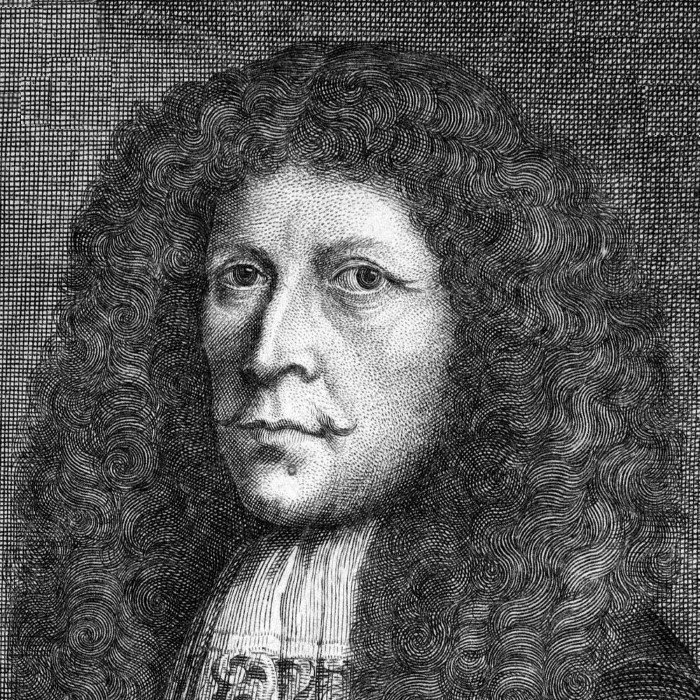
Last on the program was the Partita IV from the Harmonia Artificiosa for scordatura violin (Urbanowicz), scordatura viola (Hamilton), gamba (Biber), and archlute (Schimpf). This work was composed by Heinrich Biber, the most “traditional” (i.e., white and male) of the evening’s Baroque artists, yet one whose works were among the most startlingly advanced of the era. The Partitia proved the point, even in its innovative scordatura tuning structure—an upward shift meant to brighten the sounds of the violin and viola. Beyond this experimental departure, the technicality of fast-paced runs and trills (performed with ardent virtuosity by both Hamilton and Urbanowicz) emphasized the timeless communion between composers and their performers. Within that communion the past entered the present upon a song, and only one last gate remained to be opened with the encore: the motet Domine by Lucrezia Orsina Vizzana.
For gamba player Sarah Biber, this work was her favorite of the program. She shared how she’d chosen the piece after reading Divas in the Convent by Craig Monson. “Learning about the life of Vizzana inspired me go on a treasure hunt to find her music…and so I did.”
Vizzana, a nun born in the 16th century, lived most of her life in a convent. There, she wrote 20 motets, accessible to the lay public only through a small grate in the convent door. In this sense, it was Vizzana who perhaps best captured the heart of the evening. For Domine brought together all the voices of the evening in a coursing work with a morphing melody, traded and reimagined as it poured between the various instruments. Hamilton’s opening solo, richly and soulfully played, captured the work’s original intent as a vocal tribute to Psalm 8. As the psalm reads:
“Look, in awesome wonder, at the Heavens above…
…the Stars that sparkle and flicker their witness
Of the dawn of time.”
So there we were, beneath those same stars on a warm midsummer eve, centuries later. The confining gates of our own past year had been opened alongside those of foregone artists whose liberation was granted in part by this very event. Composers, musicians, audience, and stars alike—we had all wandered back into the wild to meet at this golden-sunset juncture in time. And, for that brief, songful hour or two—we were free.


